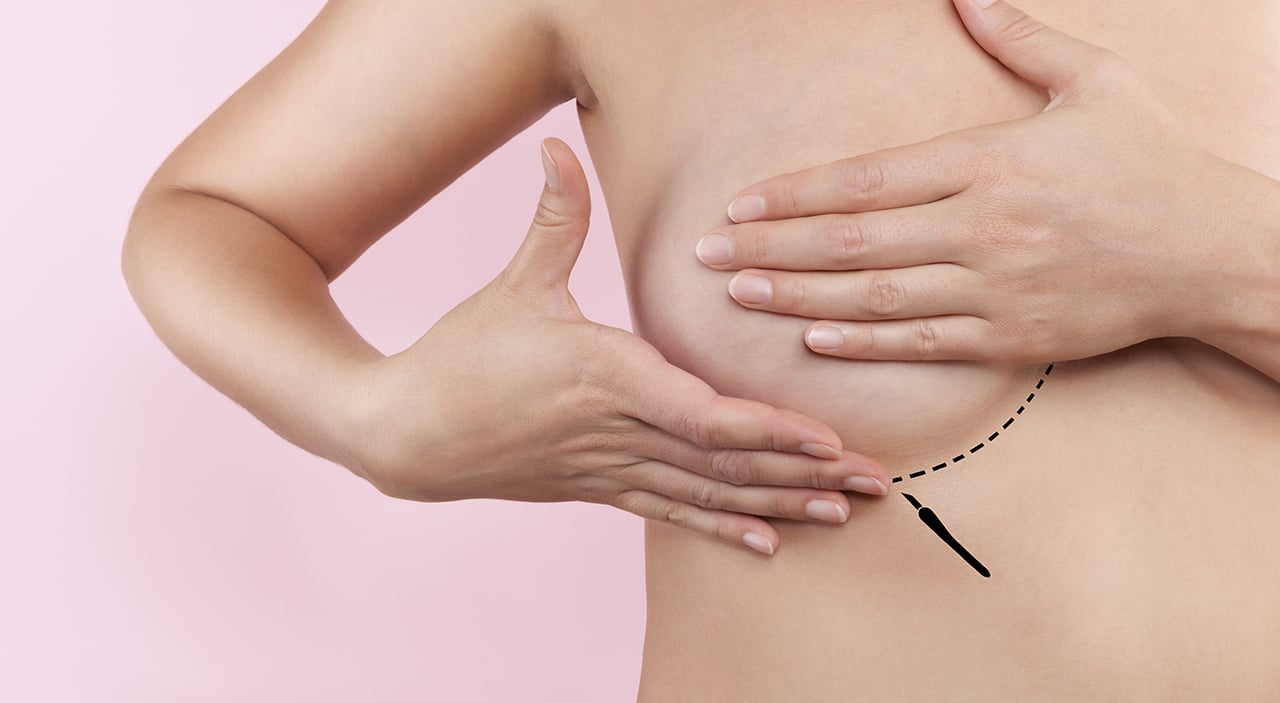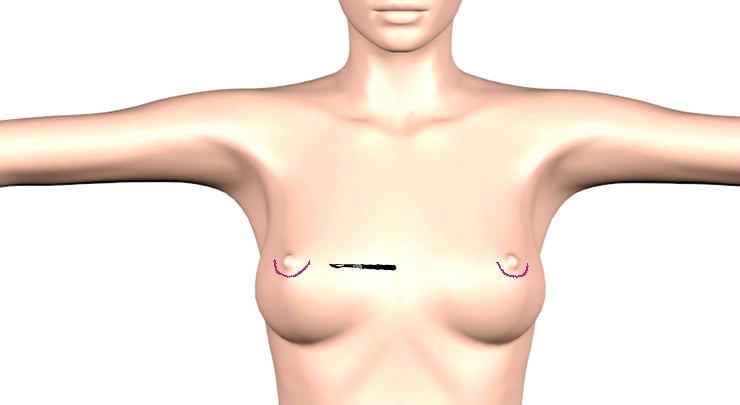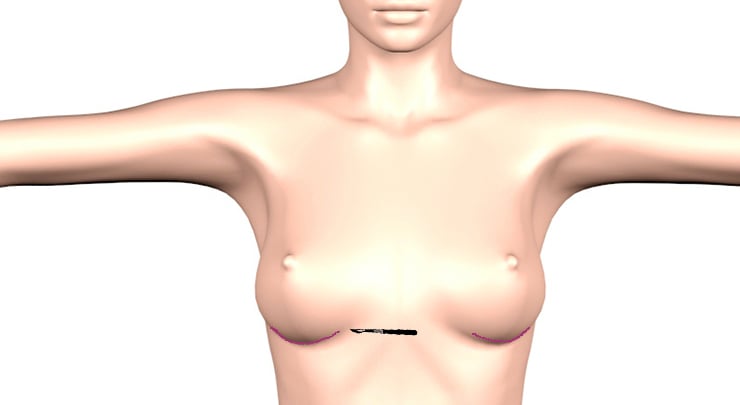
Always be a first-rate version of yourself, instead of a second-rate version of somebody else.
- Judy Garland

Always be a first-rate version of yourself, instead of a second-rate version of somebody else.
- Judy Garland
As with any surgery, breast augmentation involves making incisions. These incisions allow for a pocket to be created and insertion of a breast implant in the chest. Incision placement is important because that’s where the resulting scar will be after surgery.
ou may not think that incision placement is important when planning your breast augmentation — but it is. That’s because these incisions will dictate where your scars will be once you’ve recovered from your surgery. While your scars will heal into thin, silvery lines with proper care, you should consider their placement so you can be comfortable with your final results.
There are four locations where incisions can be made during breast augmentation. The right one for you will be decided during your consultation. After we talk about your goals and desired outcome, I’ll tell you which incision location would be most appropriate based on my medical expertise. To better understand why that location was recommended, you’ll also receive an explanation.

The periareolar incision is made halfway around the lower circumference of the areola. This allows for a well concealed scar because it remains hidden by the slightly bumpy texture and darker pigment of the areola edge. It is preferred if your primary concern is scarring. Another reason why the periareolar incision is preferred is that it makes positioning of the implants easier and more accurate, since the implants have to be placed right behind the areola and nipple.
The drawbacks of this site include a higher risk of breastfeeding difficulty, changes in nipple sensation and infection. A study published in Plastic & Reconstructive Surgery found that the periareolar incision increased the risk of nipple sensation changes and areolar pain by three times following breast augmentation.
However, another study published in the same journal a few years earlier reported that there was no difference in sensory outcomes following when comparing the periareolar and inframammary incision.
Women with smaller areolae who want silicone breast implants may not be able to have a periareolar incision. This is because the implant may not be able to fit through this incision. Those who plan to breastfeed may also not be presented with this option.
global$galleries_array;
The most common incision placement is within the inframammary fold, which is the horizontal crease where the breast meets the body (breast fold). Most plastic surgeons prefer this site because it gives direct access to the tissue that needs to be modified to create the implant pocket. The tissues can also be seen by the surgeon, making the surgery more precise. In addition, implant placement is more accurate. Any size of implant can be placed through this incision and there is a lower risk of breastfeeding difficulties and changes in nipple sensation.
Drawbacks of the inframammary incision is that the resulting scar is not as hidden. It may be clearly visible in the breast fold if you look from below, but not as visible if you’re looking straight on.

The transaxillary incision is placed in the armpit. Through this incision, a tunnel to the breast is created so that a pocket can be formed for implant insertion. A lighted camera called an endoscope is used to help do this. Saline implants are generally preferred when using the transaxillary approach because they’re smaller (saline implants don’t come pre-filled, so only the shell would need to be inserted), however some surgeons can place silicone implants as well. There are no scars on the breast — only in the armpit.
The main problem with this incision is that there is less control over what tissues are modified during surgery. The surgeon doesn’t have direct visualization and implant placement can be difficult because it’s all done through the armpit, which is far from the actual breast itself. In addition, the recovery may be more intense because of the increased risk of bleeding and bruising. Revision surgery cannot be performed through the same scar.

The transumbilical incision, or TUBA, is the least common approach. It is made in the belly button, leaving a scar that’s very well hidden within its folds. This also requires some tunnelling for indirect access to the breasts, making it very difficult to get accurate placement of the implants. In fact, one of the most common complications with TUBA is poorly positioned implants and abnormal looking results. Because of its high complication rate, I do not perform this technique. It’s simply not worth the risk.
There are benefits and drawbacks for each incision location. However, there will always be at least one that is the most suitable for a patient. This is usually either the inframammary or periareolar incision.